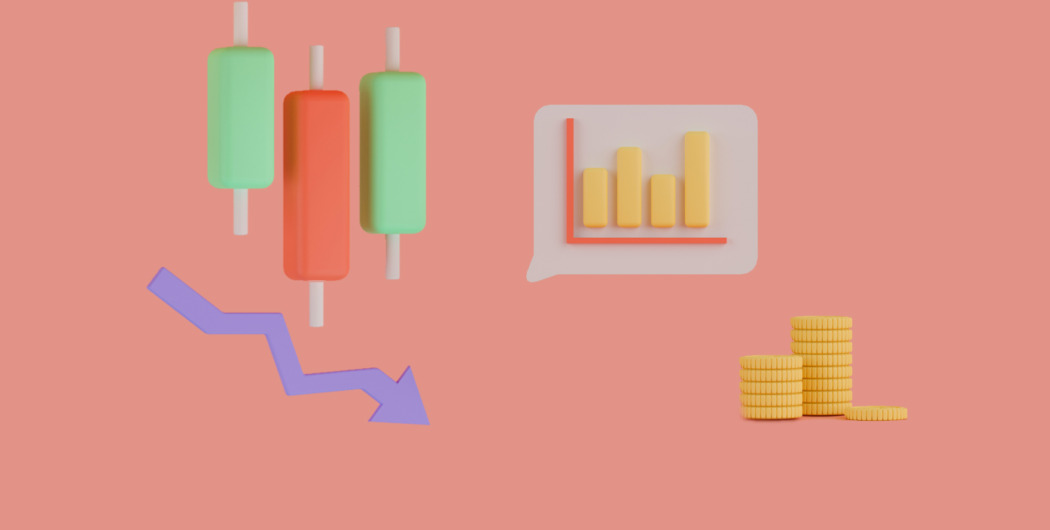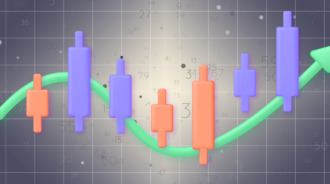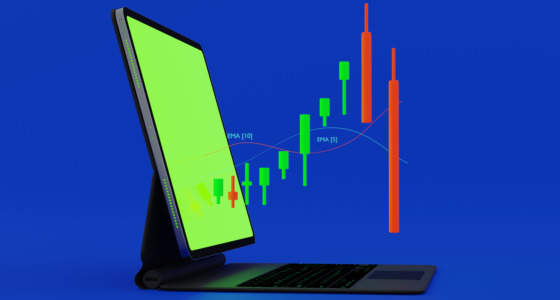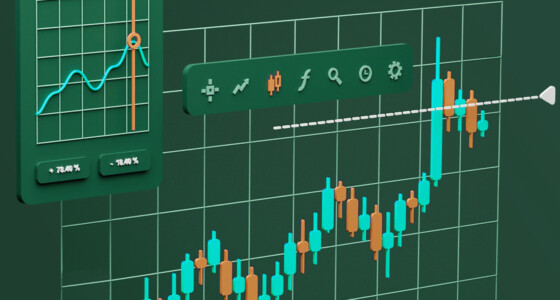

Volume is a vital part of trading. It reflects how much of a given financial asset is traded over a certain period. For example, the daily market volume from all trading venues on which Nasdaq Issues are traded is 5 billion shares.
A negative volume index isn’t a common volume indicator. Traders mostly look for an increased market volume to enter the market, but the NVI reflects the periods when the trend loses its force. Still, you can apply the negative volume index indicator strategy. Keep reading to learn how to use the NVI in trades.
Breaking down the NVI indicator
The theory behind the Negative Volume Index (NVI) indicator is that, even if the trading volume goes down, it is still a strong trend if it continues. The general idea is that if there are uninformative traders, this will result in a high trading volume.
It is generally assumed that on days with low trading volume, the “informed traders” will be more active. This would generate what we call “smart money.” If the price continues to go high even on days with low volume, then it signals that the price upward trend will likely continue.
How to use the NVI indicator
To use the NVI indicator, you need to learn how to calculate it. There are several steps to do that. First, you need to set up the starting NVI at a round figure. Usually, that’s 1,000, but you may go for 1 or 100. If the volume keeps going up, then the NVI will be the same as the one in the past. If it goes down, you will use the formula below:
NVIt = [(Pt-Pt-1)/Pt-1]*NVIt-1
Where:
· Pt = Index level or price recorded at time t
· NVIt = Negative volume index recorded at time t
The NVI indicator may be used to set up an easy-to-use trading strategy. It can be used to generate a buy signal whenever it goes over the Exponential Weighted Moving Average (EWMA). Traders usually go for the 250-day moving average where the EWMA is involved.
Negative Value Index Backtest
To do a backtest on the NVI, you need to do a proper setup. The target security for this is the S&P 500 Index. The strategy is very simple: whenever the NVI goes over the 20-day moving average, it is time to buy the stock. If it goes below once more, that stock is sold, converting the position into money. You do not short or use leverage.
To calculate the performance of your NVI strategy, you need to compare it to the Sharpe ratio, total return, and max drawdown metrics. Use the buy-and-hold strategy to see how the results compare. For instance, the NVI strategy will show a 30% total return, whereas the buy-and-hold strategy will return about 40% of the analysis time.
Sharpe ratio is popular to use during backtests, as it proves to be less risky compared to the buy-and-hold total return. Max drawdowns will also show you differences from peak bottom as it goes forward. Used together, they will help you get an average idea of the best strategy.

NVI history

The negative volume index is a technical indicator developed by Paul Dysar in the 1930s but it didn’t become popular until the 1970s.
Paul Dysart created an indicator that added net advances (the number of stocks in an index whose prices increased minus the number of those with decreased prices) when volume declined from one period to another.
Based on this formula, the indicator wouldn’t react to price movements with the increased volume remaining unchanged. However, the index could decline if net advances fell while the volume went down.
The current index’s version was developed by Norman Fosback. Fosback didn’t consider net advances. Instead, he used the percentage change in the market price. This does a better job of showing how strong the market movement is.
What is a negative volume index?
Traders apply the NVI to see when the smart money is active. Smart money movements are mostly characterized by institutional investors. Therefore, they reflect the so-called mainstream.
The common idea is that the “smart money” is most active when markets are calm; therefore, volume is low. On the contrary, high-volume days are characterized by active “not-so-smart money.” As a result, the “not-so-smart” money is more influenced by emotions than “smart money” and is accompanied by increased volatility.
The NVI indicator is represented by trendlines that reflect how an asset’s price changes with the impact of volume. You can find the indicator below the price chart as with indicators like RSI and MACD.
Negative volume index calculation
Fortunately, to use an indicator, you don’t need to do any calculations. It’s enough to click the mouse twice. However, to understand what data it considers, it’s useful to see how the indicator is built.
The NVI moves around round levels. They depend on the timeframe you trade on. If you consider long-term periods, the index will more likely be above 100. However, if you wonder how volatile the intraday market is, the indicator will move around the 10 level. The levels can be even negative if the indicator is applied to short-term timeframes.
If the price volume rises for a certain period, the NVI won’t change.
However, a fall in the volume during a certain period will drive the index. Its value will be calculated as follows:
Where:
- NVIt stands for the negative volume index at the certain period
- Pt is the price or the index level at the certain period
Negative volume index indicator analysis
The NVI indicator is mostly used after the end of high-volume trading. Low-volume trading reflects how mainstream investors and institutions are trading a financial instrument.
The negative strength index is widely used in combination with an exponential moving average (EMA). The most common setting is a 255 period. The EMA reflects the trend in the indicator over the past year.
Positive volume index vs. negative volume index
NVI is usually combined with the positive volume index (PVI). Both indicators show how an asset’s price is influenced by volume.
Positive volume index trendlines are usually related to high-volume market trends. The strong market trend is mostly driven by smart money and noise traders.
Negative volume index indicator strategy
The negative volume index is usually applied to the daily chart. The developer of the current index version, Norman Fosback, noted that the NVI and EMA interactions predict the price direction. When the index breaks above the EMA, it’s more likely that the price will rise. If the NVI falls below the 255-day EMA, the price will more likely form a downtrend.
Every trader should remember that there is no perfect strategy. Fosback said that this strategy works in 96% of cases for an uptrend and only in 53% of cases for a downtrend. Also, the strategy was backtested on the stock indices. A trader should consider that financial instruments differ in liquidity and volatility. That’s why before applying any trading approach, you should test it on various assets.
It’s more likely that the backtesting results will be symmetric when implemented on the currency and commodity markets. Currencies don’t have a long-term directional bias, while commodities are traded in cycles and also have no directional bias in general.
Final thoughts
The negative volume index is not a tool to determine entry and exit points. Volume indicators are generally combined with other indicators to predict whether the market makers have enough power to drive the price in a certain direction. The NVI, on the other hand, shows when markets calm down. You can apply Bollinger Bands and negative volume index indicators to catch the periods of price consolidation.








